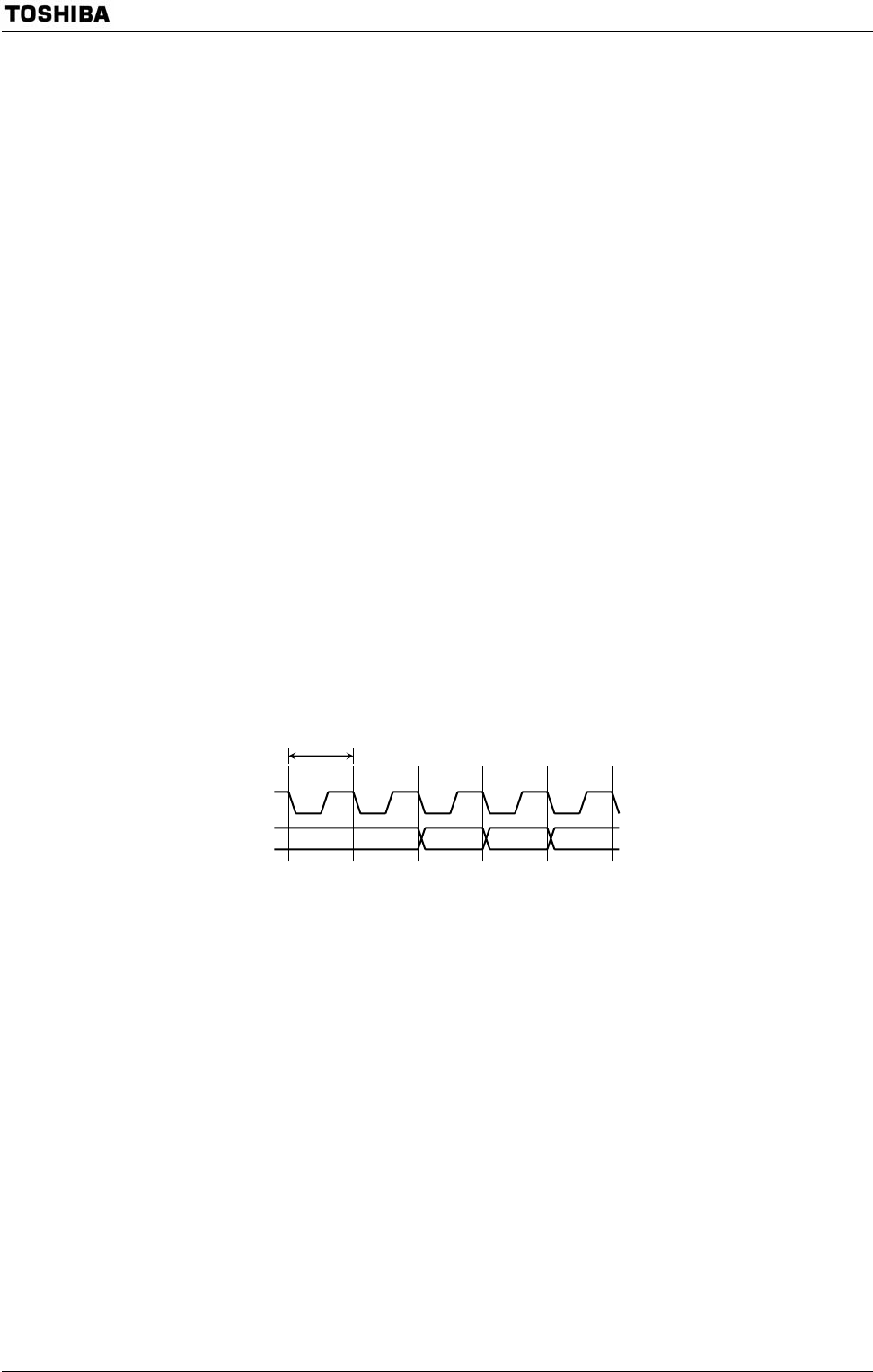
TMP92CM22
2007-02-16
92CM22-35
Although the control registers used for setting the transfer source and transfer
destination addresses are 32 bits wide, this type of register can only output 24-bit
addresses. Accordingly, micro DMA can only access 16 Mbytes (the upper eight bits of a
32-bit address are not valid).
Three micro DMA transfer modes are supported: one-byte transfers, two-byte
(one-word) transfer and four-byte transfer. After a transfer in any mode, the transfer
source and transfer destination addresses will either be incremented or decremented,
or will remain unchanged. This simplifies the transfer of data from memory to memory,
from I/O to memory, from memory to I/O, and from I/O to I/O. For details of the various
transfer modes, see section 3.4.2 (1), detailed description of the transfer mode register.
Since a transfer counter is a 16-bit counter, up to 65536 micro DMA processing
operations can be performed per interrupt source (provided that the transfer counter
for the source is initially set to 0000H).
Micro DMA processing can be initiated by any one of 34 different interrupts – the 33
interrupts shown in the micro DMA start vectors in
Table 3.4.1 and a micro DMA soft
start.
Figure 3.4.2 shows a 2-byte transfer carried out using a micro DMA cycle in transfer
destination address INC mode (micro DMA transfers are the same in every mode
except counter mode). (The conditions for this cycle are as follows: Both source and
destination memory are internal RAM and multiples by 4 numbered source and
destination addresses.)
Figure 3.4.2 Timing for Micro DMA Cycle
States 1 to 2: Instruction fetches cycle (Gets next address code).
If the instruction queue buffer is FULL , this cycle becomes a dummy
cycle.
State 3: Micro DMA read cycle.
State 4: Micro DMA writes cycle.
State 5: (The same as in state 1, 2.)
a. b. c. d. e.
dstsrcA0 to A23
CLK
1 state


















